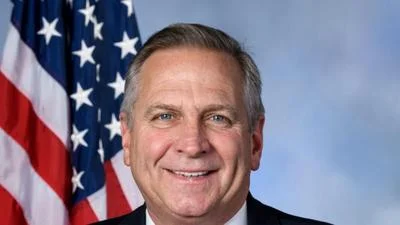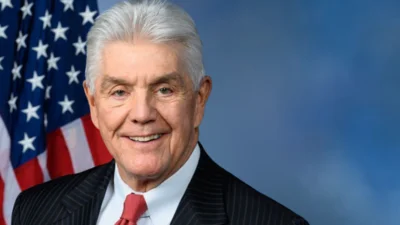Opening remarks, as prepared, of Water Resources and Environment Subcommittee Chairman David Rouzer (R-NC) from today’s hearing entitled, “Stakeholder Perspectives on the Impacts of the Biden Administration’s Waters of the United States (WOTUS) Rule”:
For more than half a century, the Clean Water Act has functioned to improve the quality of our Nation’s rivers, lakes, and streams. We should be proud of what we have done and acknowledge its success in protecting waters all around the country.
However, sweeping legislation like the Clean Water Act – while certainly beneficial – can lead to bureaucratic overreach and regulatory headaches that often don’t make sense to regulated communities. Regulations of any type should be simple and easy to follow. They should carry out the intent of the law in a clear and transparent manner, making them easily enforced by their mere simplicity. There should be no subjectivity or wiggle room for any bureaucrat or bureaucrats to substitute their own biases.
That’s not the case here, unfortunately. As I’ve said before, there’s no greater example of bureaucratic overreach under the Clean Water Act than with the regulatory nightmare of complying with and understanding the definition of a “water of the United States.” For the purposes of what the Clean Water Act covers, this definition is crucial. It is used for determining a number of applications under the law, including state and tribal water quality certification programs, pollutant discharge permits, and oil spill prevention and planning programs.
Importantly, this definition is used for determining who must obtain a Clean Water Act Section 404 “dredge and fill” permit, which is well-known for being a costly and time-consuming process, and at times simply used as a roadblock to stop projects that some don’t like — never mind the merits. I think we’ll hear a lot about these permits today, as they can require mitigation — getting into hundreds of thousands of dollars for everyday activities people undertake to improve their own private property. If they take an action modifying a water, and later find the area in question indeed was a WOTUS, they can face staggering fines and even jail time.
The WOTUS question has been debated for decades in court, and varying presidential administrations have issued regulatory definitions of WOTUS that are quite expansive — and subjective — which was most definitely the case with the 2015 Obama EPA WOTUS Rule.
I was heartened back in 2020, when the Trump Administration released the Navigable Waters Protection Rule, which finally brought clarity and predictability to the nagging question of what a WOTUS should be. The Trump rule balanced state jurisdiction with federal responsibilities. As such, I was quite concerned when the Biden Administration released its final version of a new WOTUS definition, notably, on the Friday before New Year’s Eve, in the thick of the hustle and bustle of the holidays. This new definition, once again, places unnecessary burdens on the communities, farmers, businesses, and industries who rely on clean water and clarity of the law.
For example, in areas like North Carolina’s Seventh District, where storms can be frequent, water often lingers in areas that shouldn’t be classified as wetlands. This inconsistency of the law’s interpretation and the ever-changing status of the weather promises years of headaches and legal wrangling for North Carolinians and Americans.
Early last year, the Supreme Court announced it would hear a case on the definition of WOTUS, which highlights the enormous impacts these rulemakings have on citizens across the country. In addition to the content of the Biden Administration’s WOTUS rule itself, I am particularly disappointed they forced it on the public before the Supreme Court’s forthcoming decision. This decision irresponsibly risks taxpayer resources and everyone’s time, as the Supreme Court could very well send the administration back to the drawing board on a WOTUS definition – ultimately creating even more confusion and uncertainty. It would be common sense to pause and wait to see what the Supreme Court decides before jamming this through now.
It is for this reason, along with those I mentioned previously, that Chairman Graves and I are leading, along with more than 150 of my Republican colleagues, a Congressional Review Act resolution that would void this ill-advised rulemaking. We should not have to take this step, as the Biden Administration did not have to take this action. However, this is the situation we find ourselves in, and I am confident the House will pass the resolution.
I’m looking forward to hearing from our panel today about how the Biden Administration’s actions will impact various sectors of the economy and our constituents.
Click here for more information, including video and witness testimony.
Original source can be found here








